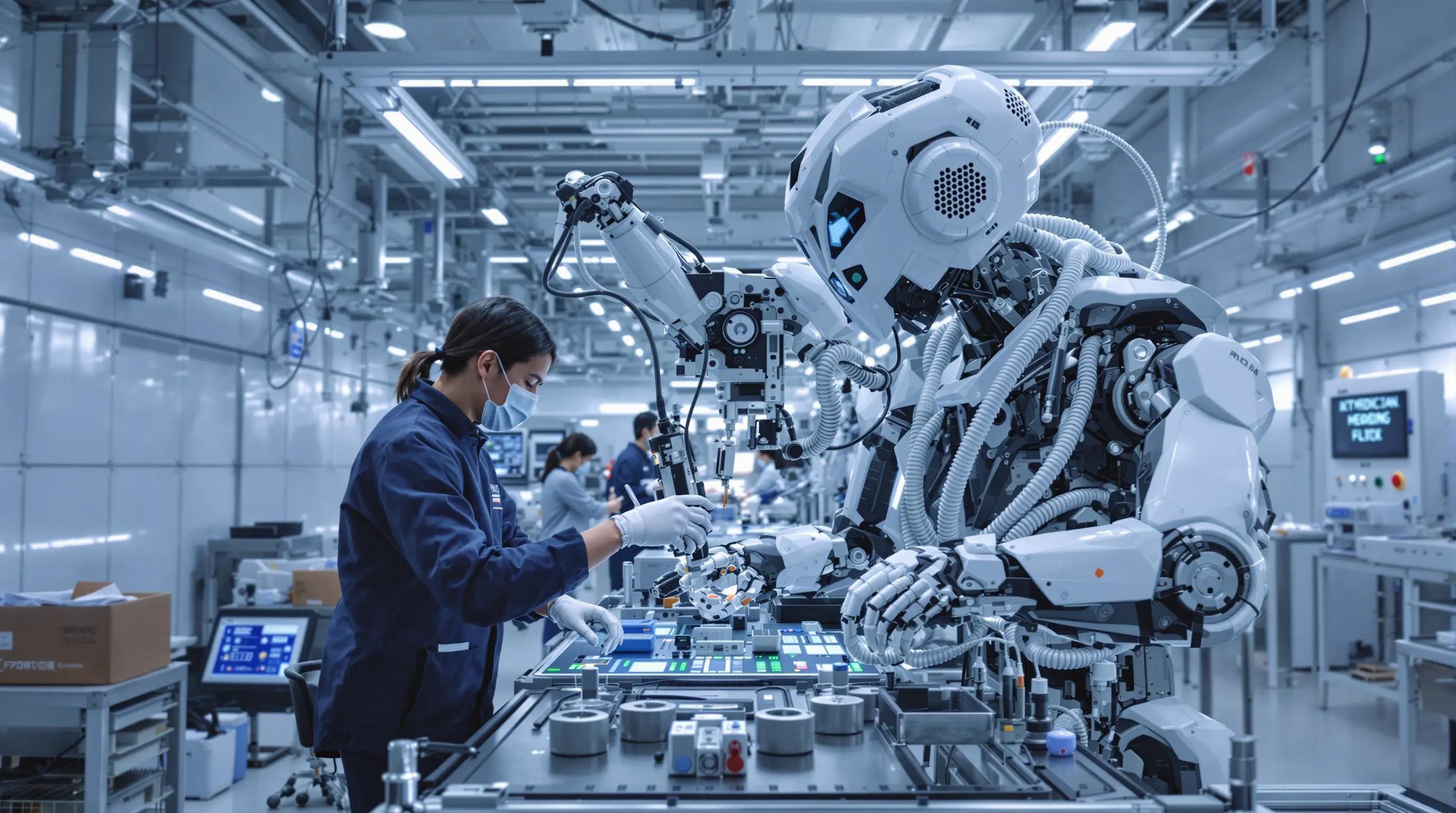August 16, 2024|9 min reading
Solving Climate Change: How AI Can Help Us Save the Planet

Many people today feel overwhelmed by the state of the planet. Climate change, pollution, and the loss of biodiversity can make the future seem bleak. It’s easy to think that these problems are too big to solve. But there’s good news: humanity has faced big environmental challenges before, and we’ve overcome them. The key is to step back, look at the data, and see that solutions are not just possible—they’re already in the works. And one of the most powerful tools we have today to tackle these challenges is artificial intelligence (AI).
Why It's Easy to Feel Discouraged
When you see news stories about melting ice caps, forest fires, and endangered species, it’s natural to feel a sense of doom. It might seem like no matter what we do, things are only getting worse. But the truth is, while these problems are real and urgent, humans have the ability to solve them. Throughout history, we’ve taken on massive challenges and found ways to improve the world. And now, with the help of AI, we have even more potential to make a difference.
AI: A New Tool for Solving Big Problems
AI, or artificial intelligence, is a type of technology that allows computers to learn and solve problems on their own. It’s like giving a computer a brain that can think and adapt. Over the past few years, AI has made huge strides in areas like medicine, transportation, and energy. Now, it’s being used to help solve one of the biggest challenges of our time: climate change.
Energy: Powering the World Without Fossil Fuels
One of the main drivers of climate change is the burning of fossil fuels like coal, oil, and gas. These fuels release carbon dioxide (CO2) into the atmosphere, which traps heat and warms the planet. To solve climate change, we need to move away from these dirty energy sources and switch to cleaner ones like solar, wind, and nuclear power.
This is where AI comes in. AI can help design and optimize renewable energy systems, making them more efficient and cost-effective. For example, AI can predict weather patterns to better manage solar and wind power, ensuring that we get the most energy possible from these sources. AI is also helping to improve the storage of renewable energy, so we can use it even when the sun isn’t shining or the wind isn’t blowing.
Transportation: Moving Forward with Clean Energy
Transportation is another big source of CO2 emissions, especially from cars, trucks, and airplanes. One way to reduce these emissions is to drive less and use public transportation, walk, or bike more. But for the trips we still need to make by car, electric vehicles (EVs) are a great solution.
Electric cars produce far fewer emissions than traditional gas-powered cars, especially as our electricity grid becomes greener. AI is helping to make electric vehicles more efficient and accessible. For example, AI can optimize routes to save energy and reduce traffic congestion. It can also manage charging stations to make sure that EVs are charged and ready to go when we need them.
Food: Eating for a Healthier Planet
The way we produce and consume food has a big impact on the environment. Agriculture, especially livestock farming, is a major source of greenhouse gases like methane. To reduce these emissions, we need to make our food systems more efficient and waste less food.
AI can play a role here, too. It can help farmers grow more food with less land, water, and energy by optimizing planting, watering, and harvesting. AI can also help reduce food waste by predicting demand and improving supply chains, so less food ends up in landfills.
Construction: Building a Sustainable Future
The construction industry is another big contributor to CO2 emissions, especially through the production of cement and steel. But AI is helping us find ways to build more sustainably. For example, AI can design buildings that use less energy and materials while still being strong and durable. It can also help us find alternative materials that are less harmful to the environment.
AI can even capture CO2 emissions from cement production and store them safely underground, keeping them out of the atmosphere. This kind of innovation is key to reducing the environmental impact of construction while still allowing us to build the homes, schools, and infrastructure we need.
Why We Should Be "Urgent Optimists"
It’s easy to feel overwhelmed by the challenges we face, but it’s important to remember that we have the tools and the knowledge to solve them. Instead of feeling hopeless, we can choose to be "urgent optimists." This means recognizing the urgency of the problems we face but also believing that we can solve them if we work hard and use the right tools—like AI.
Human history is full of examples where we’ve overcome big challenges by working together and using our creativity. Today, we have more technology, more knowledge, and more motivated people than ever before. We’re in a unique position to make a positive impact on the planet, and AI is one of the key tools that can help us do it.
How You Can Make a Difference
You might be wondering, "What can I do to help?" The good news is that there are lots of ways you can make a difference, both big and small. Here are a few ideas:
- Learn more about AI and how it’s being used to solve environmental problems. There are lots of resources online where you can learn about AI, climate change, and other important issues.
- Make sustainable choices in your daily life. Whether it’s using less energy, eating more plant-based foods, or choosing public transportation, every little bit helps.
- Get involved in your community. Join a local environmental group, volunteer for a clean-up day, or participate in a climate march.
- Support policies and leaders who are committed to addressing climate change. Vote in elections, write to your representatives, and speak out on social media.
Conclusion: A Future Full of Hope
The challenges we face are big, but so is our potential to solve them. With the help of AI and other innovative technologies, we can tackle climate change and create a more sustainable future. It’s not going to be easy, and it’s not going to happen overnight, but if we stay positive and keep working towards our goals, we can make a real difference. Remember, the future is in our hands, and it’s up to us to shape it. Let’s use our creativity, our intelligence, and our optimism to build a world that’s better for everyone.
FAQs
What is AI and how can it help with climate change?
AI, or artificial intelligence, is technology that allows computers to learn and solve problems. AI can help fight climate change by making renewable energy more efficient, optimizing transportation, reducing food waste, and finding sustainable ways to build and produce goods.
Why should we be optimistic about solving climate change?
We should be optimistic because humanity has overcome big challenges before. We have the tools, knowledge, and determination to tackle climate change, and new technologies like AI are giving us even more ways to make a positive impact.
How can young people help fight climate change?
Young people can help by learning about climate change, making sustainable choices in their daily lives, getting involved in their communities, and supporting leaders and policies that are committed to addressing climate change.
Is it possible to power the world with renewable energy?
Yes, it’s possible to power the world with renewable energy like solar, wind, and nuclear. AI is helping to make these energy sources more efficient and cost-effective, making it easier to transition away from fossil fuels.
What role does AI play in transportation?
AI helps make transportation more efficient by optimizing routes, reducing traffic congestion, and managing electric vehicle charging stations. It’s also helping to make electric cars more accessible and environmentally friendly.
How can AI help reduce food waste?
AI can predict demand, improve supply chains, and help farmers grow more food with less land, water, and energy. By reducing food waste, we can lower greenhouse gas emissions and make our food systems more sustainable.
Explore more

Sora Video Generation Launch: Revolutionizing Creative AI
Discover the groundbreaking Sora video product launch, redefining AI-powered creative tools for global users.

The Race for Artificial General Intelligence: Superintelligence and Society
Explore the debate on artificial general intelligence and superintelligence, featuring expert insights on its possibilit...

NVIDIA and Japan: Driving the AI Revolution in Industry
Explore NVIDIA's role in Japan’s AI revolution, from AI agents to robotics, reshaping industries and powering innovation...
